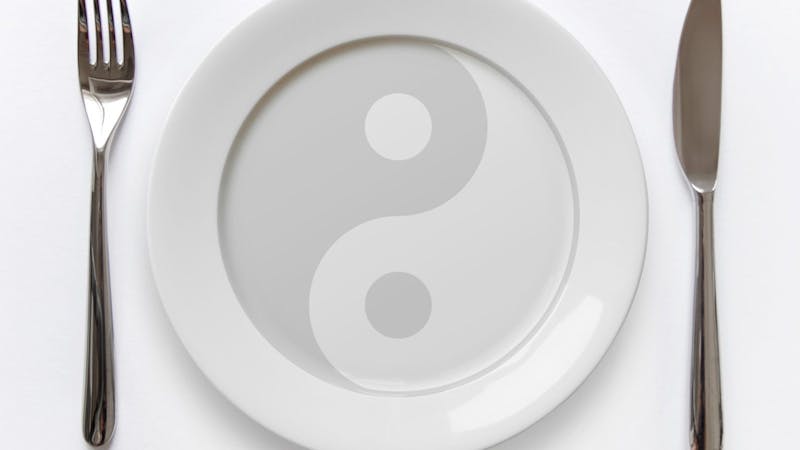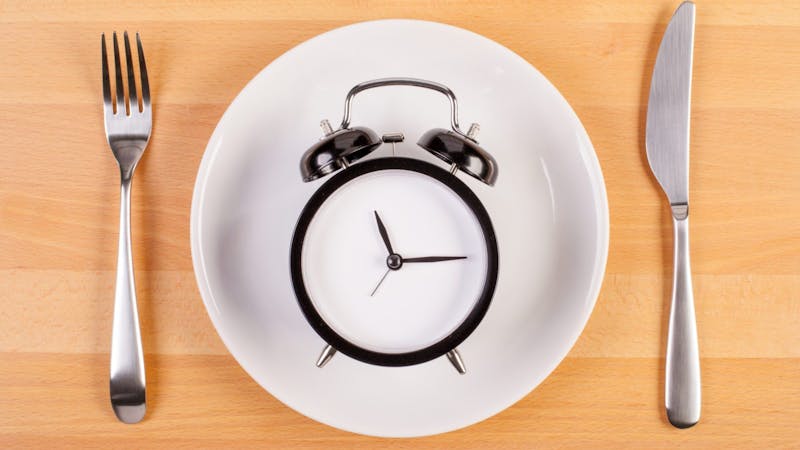Is intermittent fasting the new norm?

It’s been a good year for intermittent fasting. As we reported earlier, it was Google’s hottest trending dietary search in 2019, it was the most practiced weight-loss intervention among female physicians, and a new pilot study showed 14:10 time-restricted eating promoted weight loss and metabolic health.
Now the New England Journal of Medicine (NEJM), arguably the most prestigious medical journal, published a review article promoting the benefits of intermittent fasting and time-restricted eating. For those who follow us at Diet Doctor, you know that we support low-cab nutrition plus using time-restricted eating in most situations, and we have shared numerous success stories from individuals benefiting from it.
But does the evidence support the hype? The new review article seems to think so, but some vocal critics on Twitter and other social media outlets still have doubts and question whether intermittent fasting provides benefits beyond weight loss.
The review article makes a strong case that, yes, intermittent fasting does promote health beyond simple weight loss. Specifically, the authors refer to the metabolic shift that occurs when we stop burning glucose for fuel and instead burn fatty acids. As a result, we produce ketone bodies which have multiple potential cellular benefits and we can tap into autophagy, a cellular remodeling and regenerative process.
During fasting, cells activate pathways that enhance intrinsic defenses against oxidative and metabolic stress and those that remove or repair damaged molecules.
Ketone bodies are not just fuel used during periods of fasting; they are potent signaling molecules with major effects on cell and organ functions. Ketone bodies regulate the expression and activity of many proteins and molecules that are known to influence health and aging.
They also point to evolutionary mechanisms that promote cellular health:
Repeated exposure to fasting periods results in lasting adaptive responses that confer resistance to subsequent challenges. Cells respond to intermittent fasting by engaging in a coordinated adaptive stress response that leads to increased expression of antioxidant defenses, DNA repair, protein quality control, mitochondrial biogenesis and autophagy, and down-regulation of inflammation.
While we have to admit most of the evidence for this comes from non-human studies, human studies are catching up. The NEJM review does a nice job of referencing the growing body of literature in humans showing greater insulin sensitivity and abdominal fat loss with intermittent fasting than would be expected from weight loss alone.
However, on occasion, the authors also confuse chronic caloric restriction and intermittent fasting. For instance, their reference for “In humans, intermittent-fasting interventions ameliorate obesity, insulin resistance, dyslipidemia, hypertension, and inflammation” was a chronic caloric restriction study, not an intermittent caloric restriction study.
This highlights one of the challenges with discussing the science of intermittent fasting. Are we talking about a 14:10 eating window? Is that different than a 16:8, or a 23:1 (just one meal a day, also called OMAD)? What about alternate day fasting, or a 5:2 schedule?
Despite the growth of the literature and the vast anecdotal success, we have to admit there is still much we do not know from a scientific perspective. But I think we can all agree with their conclusion:
A diet of three meals with snacks every day is so ingrained in our culture that a change in this eating pattern will rarely be contemplated by patients or doctors. The abundance of food and extensive marketing in developed nations are also major hurdles to be overcome.
Fortunately, increased media attention, promoting success stories, and peer-reviewed journal articles show promise in improving these hurdles. The fact that 75% of surveyed female physicians use intermittent fasting for their own weight loss is encouraging for the future of mainstream medical use.
Their next conclusion is also one we can easily address:
On switching to an intermittent-fasting regimen, many people will experience hunger, irritability, and a reduced ability to concentrate during periods of food restriction.
This is where the combination of low-carb nutrition and intermittent fasting has great promise. While head-to-head studies don’t exist, most low-carb clinicians agree that eating an LCHF diet makes intermittent fasting much easier to achieve thanks to greater satiety and suppression of hunger hormones.
While the literature is still catching up to the clinical experience, we have plenty of reason to believe intermittent fasting is here to stay and is ready to become the new norm.
The cereal and snack food producers won’t like it, but your body will.
You can read more in our beginners guides to intermittent fasting and time-restricted eating.
Thanks for reading,
Bret Scher, MD FACC
Earlier


